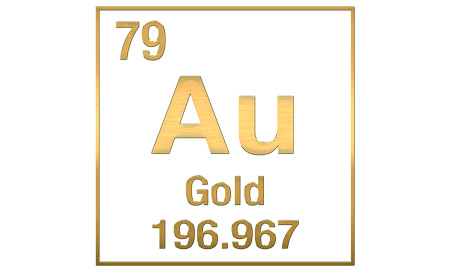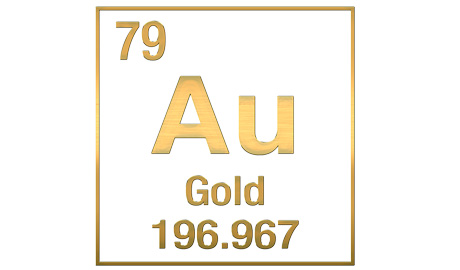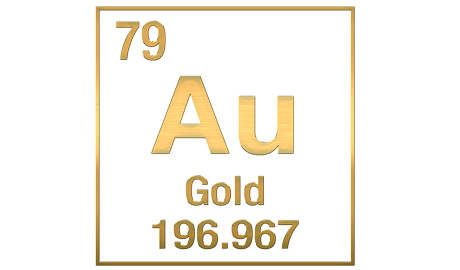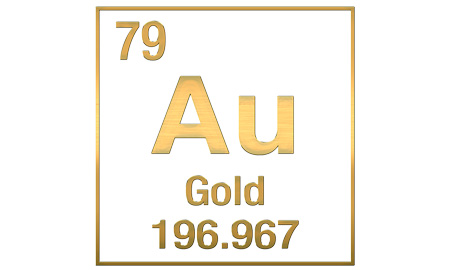Environmental Biology- Master Flashcards
1/123
There's no tags or description
Looks like no tags are added yet.
Name | Mastery | Learn | Test | Matching | Spaced |
|---|
No study sessions yet.
124 Terms
System
A network of interdependent components and process with materials and energy flowing from one component of the system to another
Eutrophication
excessive enrichment of a water body with nutrients, primarily nitrogen and phosphorus
Ecosystem
Complex assemblages of animals, plants, and their environment, through which materials and energy move
Open Systems
Are those that receive inputs from their surroundings and produce outputs that leave the system
Closed System
Exchanges no energy or matter with its surroundings
Throughput
Is the flow of energy and matter into, through, and out of a system
Threshold
Tipping points where rapid change suddenly occurs if you pass a certain limit
Equilibrium
In balance
Positive Feedback
Increase in x Increases a process or component
Negative Feedback
Increase in x Diminishes a process or component
Matter
Anything that takes up space and has mass
Three states of matter
-Solid
-Liquid
-Gas
Conservation of Matter
Matter is neither created nor destroyed
Elements
Substance that cannot be broken into simpler units by chemical means
In chemistry, these have distinct chemical characteristics
3 elements of fertilizers
N- Nitrogen
P- Phosphorus
K- Postassium
Purpose of fertilizers
Essential components of proteins, cells, other biological compounds; cruical fertilizers for plants
3 Elements of organic compounds
C- Carbon
H- Hydrogen
O- Oxygen
Purpose of organic compounds
Form the basic structure of cells and other components of living things, in combination with many other elements
3 elements of Metals
Fe- Iron
Au- Gold
Al - aluminum
Purpose of metals
Generally malleable; most (not all) react readily with other elements
3 elements of toxic elements
Pb- Lead
Hg- Mercury
As- Arsenic
Purpose of toxic elements
Many are metals that can interfere with process in nervous systems |
Atoms
Smallest particles that exhibit the characteristics of an element
Atomic Number
The characteristic number of protons per atom of an element
Atomic Mass
Sum of protons and neutrons in each nucleus which can vary
How to add or subtract with protons, electrons, and neutrons
Proton- positive which add +1
Electron- Negative which subtract -1
Neutron- neutral which add +1
Isotopes
Forms of a single element that differ in atomic mass due to a different number of neutrons in the nucleus
Different kinds of isotopes
Unstable- Radioactive isotopes
Stable- Those that do not change mass by losing neutrons
Ions, Anions, and Cations
Charged atoms that have gained or lost electrons, Negatively charged ions, Positively Charged ions respectively
Compounds
Substances composed of different kinds of atoms
Molecules
Combinations of two or more atoms
Ionic Bonds
The electrical attraction holding Atoms together
Covalent Bonds
the interatomic linkage that results from the sharing of an electron pair between two atoms
Oxidized vs Reduced
Oxidized- When an atom gives up one or more electrons
Reduced- When an atom gains electrons
Water and its unique properties
Water molecules are polar- that is, they have a slight positive charge on one side and a slight negative charge on the other side. Therefore, water readily dissolves polar or ionic substances, including sugars and nutrients, and carries materials to and from cells
Water is the only inorganic liquid that occurs in nature under normal conditions at temperatures suitable for life. Organism is synthesize organic compounds, such as oils and alcohols, that remain liquid at ambient temperatures and that are therefore extremely valuable to life, but the predominant liquid in nature is water
Water molecules are cohesive, tending to stick together. Water has the highest surface tension of any common, natural liquid. Water also adheres to surfaces. As a result, water is subject to capillary action: it can be drawn into small channels. Without this property, the movement of water and nutrients through living organisms might not be possible
Water is unique in that it expands when it crystallizes. Most substances shrink as they change from liquids to solid. Ice floats because it is less dense than liquid water. When temperatures fall below freezing, the surface layers of lakes, rivers, and oceans cool faster than and freeze before deeper water.
Water has a high heat of vaporization, using a great deal of heat to convert from liquids to vapor. Consequently, evaporating water is an effective way for organisms to shed excess heat.
Water also has a high specific heat; that is, water absorbs a great deal of heat before it changes temperature. Water slow response to temperature change helps moderate global temperatures, keeping the environment warm in winter and cool in summer
Acids
Substances that readily give up hydrogen ions
Bases or Alkaline substances
Substances that readily bond
what is pH
A value that indicates the acidity or alkalinity of a solution on a scale of 0-14, based on the proportion of H+ ions present
What do the different pH levels mean
pH<7 | acids |
pH>7 | Bases |
pH=7 | Neutral |
What does pH being logarithmic means
pH 6 represents ten times more hydrogen ions in solution than pH 7
Purpose of Organic Compounds
The material of which biomolecules, and therefore living organisms are made
Four major categories of organic compounds
Lipids, Carbohydrates, Proteins, Nucleic Acids
Lipids
Including fats and oils, store energy for cells, and they provide the core of cell membranes and other structures. Many hormones are are this, they do not readily dissolve in water
Proteins
Composed of chains of subunits called amino acids. Foled into complex three dimensional shapes. Provide structure to cells and are used for countless cell functions. Enzymes, such as those that release energy. Make muscles move, transport oxygen, and regulate cell activity
Carbohydrates
Including sugars, starches, and cellulose also stores energy and provide structure to cells.
Nucleic Acid
Complex molecules made of five- carbon sugar. One or more phosphate groups, and an organic nitrogen containing base; Expression and storage of genetic information
RNA
Ribonucleic acid
DNA
deoxyribonucleic acid; essential for storing and expressing genetic information; has 4 nucleotides. Adenine, Guanine, Cytosine, thymine; G always to C, and A always to T
Key principles of energy in an ecosystem
Energy is transformed, but not created or destroyed
In every energy exchange, some energy is degraded to less useful forms
Primary Producers capture energy
Energy is
is the ability to do work, such as moving matter over a distance or causing a heat transfer between two objects at different temperatures; energy can be many forms such as heat, light, electricity, and chemical energy; energy is measured in heat (calories) or work (joules)
Kinetic Energy
Energy contained in moving objects
Potential Energy
Stored energy that is available for use
Chemical Energy
potential energy stored in chemical bonds of molecules
Heat
describes which that can be transferred between objects of different temperatures
First two laws of thermodynamics and what is it about
Deals with how energy is transferred in natural processes. Deals with the rates of flow and the transformation of energy from one form or quality to another.
First law of thermodynamics
States that energy is conserved; that is, it is neither created nor destroyed under normal conditions. Energy may be transformed.
Second law of thermodynamics
States that with each successive energy transfer or transformation in a system, less energy is available to do work. That is, as energy is used, it is degraded to lower-quality forms, or it dissipated and is lost.
Entropy
tends to increase in all natural systems; it is a measure of disorder and usefulness of energy in a system; loss of energy as a byproduct of waste
Primary Producers
they create carbohydrates and other compounds using just sunlight, air, and water. Such as green plants
Chemosynthesis
the extraction of energy from inorganic chemical compounds, such as hydrogen sulfide
Solar Energy
is essential to life for two main reasons, 1st sun provides warmth. 2nd nearly all organisms on earths surface depend on solar radiation for life-sustaining energy.
Photosynthesis
converts radiant energy into useful, high quality chemical energy in the bonds that hold together organic molecules
percentages of Solar Radiation is uv, visible, or infrared
about 10% is ultraviolet, 45% is visible, and 45% is Infrared
How does photosynthesis work
Occurs in tiny organelles called chloroplasts that reside within the plant cells. Chlorophyll is the most important key as it can absorb light energy and use it to create high-energy chemical bonds in compounds.
It is stored in the chemical bonds in sugars and carbohydrates
Light-> Chlorophyll -> Oxygen
Photosynthesis Equation
6H2O+6CO2+ solar energy -chlorophyll-> C6H12O6 (Sugar) +6O2
Glucose
is an energy rich compound that serves as the central, primary fuel for all metabolic processes of cells.
Cellular respiration
Process of releasing chemical energy. The process in which a cell breaks down sugar or tother organic compounds to release energy used for cellular work; may be anaerobic or aerobic, depending on the availability of oxygen
Species
refers to all organisms of the same kind that are genetically similar enough to breed in nature and produce live, fertile offspring
Population
consists of all member of a species living in a given area at the same time.
Biological Community
populations of plants, animals, and microorganisms living and interacting in a certain area at a given time
Ecosystems
a specific biological community and its physical environment interacting in an exchange of matter and energy
Productivity
The amount of biomass produced in a given area during a given period of time
Biomass
biological material
Food web
a complex, interlocking series of individual food chains in an ecosystems
Trophic Level
An organisms feeding status in an ecosystem
Consumers
organisms that obtain energy and nutrients by feeding on other organisms or their remains
Producers
Organisms that produce organic material by photosynthesis
What are Herbivores, Carnivores, Omnivores, Scavengers, Detritivores, and Decomposers
Herbivores- Plant eaters
Carnivores- Flesh eaters
Omnivores- Both plant and flesh eaters
Scavengers- Eat dead carcasses
Detritivores- Consumer litter, debris, and dung
Decomposer- Final breakdown and recycling of organic materials
Biogeochemical Cycling
movement of elements and compounds that sustain us are cycled endlessly through living things and through the environment
Hydrologic Cycle
Path of water through our environment basically the water cycle; includes Evaporation, Runoff, infiltration to groundwater, atmospheric circulation, transpiration
Evaporation
Condensation
Precipitation
Runoff
Carbon Cycle
Does two things: 1) - it is a structural component of organic molecules and 2) Chemical bonds in carbon compounds provide metabolic energy
Begins when plants and other photosynthetic organisms take up carbon dioxide.
Carbon is the element that makes up the skeleton of organic compounds
Includes photosynthesis, respiration, and combustion
Mainly stored in the atmosphere
1. Photosynthesis: Plants, algae, and some bacteria absorb carbon dioxide (CO2) from the atmosphere and convert it into glucose (sugars) using sunlight. This process is the main way carbon enters the biosphere from the atmosphere.
2. Respiration: Living organisms, including plants, use glucose for energy. This process releases CO2 back into the atmosphere as a byproduct.
3. Decomposition: When plants and animals die, their bodies decompose, and the carbon in their tissues is released back into the atmosphere or soil by bacteria and fungi.
4. Ocean Absorption: The oceans absorb a significant amount of CO2 from the atmosphere, which can then be stored for long periods in deep ocean sediments.
5. Fossil Fuels Formation: Over millions of years, some organic matter is buried and transformed into fossil fuels (coal, oil, and natural gas).
6. Combustion and Release: When fossil fuels are burned, the stored carbon is released as CO2 back into the atmosphere.
7. Volcanic Activity: Volcanic eruptions release carbon dioxide and other gases from the Earth's interior back into the atmosphere.
8. Erosion and Weathering: Rocks and sediments undergo weathering and erosion, releasing carbon stored in them into the atmosphere, soil, and water.
Nitrogen Cycle
The circulation and reutilization of nitrogen in both inorganic and organic phases; is not readily usable by most organisms
Nitrogen fixation- Bacteria produce ammonia or ammonium
Nitrification Nitrifying bacteria oxidize ammonia or nitrate ions
Assimilation Plants absorb NH3, NH4, or NO3, to make organic compounds
Ammonification- where decomposers like bacteria and fungi break down organic nitrogen compounds, such as proteins in dead organisms and waste, into ammonia (NH3)
Denitrification- Denitrifying bacteria produces N2
Sulfur Cycle
Describes the movement of sulfur through the atmosphere, mineral forms, and through living things; Sulfur plays a strong role in controlling the :acidity, acid, or pH of rain surface water and soil; Is essential nutrient for many organisms, but is also involved in many pollution problems such as acid rain
. Release from Geological Sources:
Sulfur is released from geological sources like rocks and sediments through weathering and erosion.
2. Oxidation to Sulfate:
When sulfur is exposed to air, it combines with oxygen to form sulfate (SO4).
3. Uptake by Plants and Microbes:
Plants and microbes absorb sulfate from the soil and convert it into organic sulfur compounds like amino acids and proteins.
4. Conversion to Organic Forms:
Sulfur is incorporated into living tissues, forming part of proteins and other organic molecules.
5. Decomposition and Release:
When organisms die and decompose, sulfur is released back into the environment as inorganic forms like hydrogen sulfide (H2S) or sulfate.
6. Microbial Transformations:
Various bacteria, including Thiobacillus, play a crucial role in transforming inorganic sulfur compounds like hydrogen sulfide and elemental sulfur into sulfate under different environmental conditions.
7. Sulfur's Journey:
Sulfur can also enter the ocean through runoff and deposition, where it can be used as a biological energy source by marine organisms or become part of ocean sediments.
Nitrogen and Phosphorus are
key nutrients that are limiting elements because they are essential for plant and animal growth
Components of a eukaryotic cell
Mitochondria
Membrane
Nucleus
Membrane: This outer boundary regulates what enters and exits the cell, separating the internal environment from the external environment.
2. Cytoplasm: The gel-like substance within the cell, excluding the nucleus, where organelles are suspended.
3. Nucleus: The control center of the cell, containing the genetic material (DNA) enclosed within a nuclear membrane.
4. Organelles: These specialized structures within the cytoplasm perform specific functions, including:
Mitochondria: Powerhouses of the cell, generating energy through cellular respiration.
Endoplasmic Reticulum (ER): A network of membranes involved in protein and lipid synthesis.
Golgi Apparatus: Processes and packages proteins and lipids, often forming vesicles for transport.
Lysosomes: Contain enzymes to break down cellular waste and debris.
Ribosomes: Responsible for protein synthesis.
Cytoskeleton: A network of fibers providing structure, support, and movement within the cell.
5. Cell Wall (Optional): Found in plant, fungal, and some protist cells, providing additional support and protection.
C6H12O6
Glucose
Three particles of an atom
Protons, Electrons, Neutrons
Charges and weight of Protons, Neutrons, and Electrons
Protons- Positive Charge +1 weight
Neutrons- No charge +1 weight
Electrons- Negative charge -1 weight
Avogadro’s Number
6.023 × 10²³ ; It is the number of molecules of any gas present
The number of protons in one atom’s _____ and the number of electrons determines the _______ of the element
Identity, Chemical Properties
The atomic number tells you the number of ______ in one atom of an element. It also tells you the number of _____in a neutral atom of that element. The atomic number gives the identity of an element as well as its location on the periodic table. No two different elements will have the _____ atomic number
Protons, Electrons, Same
The _____ of an element is the average mass of an elements naturally occurring atom, or isotopes, taking into account the ____ of each isotope
Atomic Mass, Natural abundance
The _____ of an element is the total number of protons and neutrons in the ____ of the atom
Atomic mass #, Nucleus
The mass number is used to calculate the number of _____ in one atom of an element. In order to calculate the number of neutrons you must subtract the ______ from the _______
Neutrons, Atomic #, Atomic Mass #
Anatomy of an atom on the periodic table

79 is the atomic # or the # of protons
196/197 is the atomic mass or how much it weighs

What is the number of protons
79(p)

What is the number of electrons
79(e)

What is the number of neutrons
117
How to find amount of neutrons
Atomic Mass - Atomic Number
What is Atomic mass
Protons + Neutrons
Isotopes
Forms of a single element that differ in their atomic mass
Compounds
Atoms of elements join together or substances composed of different kinds of atoms